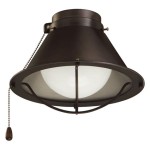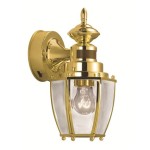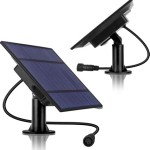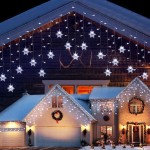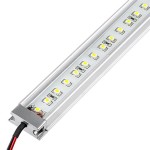How Does An Outdoor Wood Burner Work?
Outdoor wood burners, also known as outdoor furnaces or hydronic heaters, provide an alternative heating solution for homes and other buildings. Understanding the operational principles of these systems is crucial for effective use and maintenance. They function by burning wood to heat water, which is then circulated to the target building to provide warmth. The efficiency and environmental impact of these systems are influenced by factors such as design, fuel type, and operational practices.
The core function of an outdoor wood burner revolves around the combustion of wood in a contained environment. This process generates heat that is subsequently transferred to a water jacket surrounding the firebox. The heated water is then pumped through insulated underground pipes to a heat exchanger located within the building being heated. This heat exchanger transfers the heat from the water to the building's existing heating system, such as a forced-air furnace or radiant floor heating.
Combustion Process and Heat Generation
The combustion process within an outdoor wood burner is a complex chemical reaction involving wood, oxygen, and heat. The wood, typically in the form of logs or wood chips, is loaded into the firebox. Air is introduced into the firebox to supply the necessary oxygen for combustion. The initial ignition of the wood requires an external heat source, such as a match or lighter. Once the wood begins to burn, it releases volatile gases and organic matter, which ignite and further contribute to the combustion process. The heat generated during combustion raises the temperature of the firebox and, consequently, the surrounding water jacket.
Modern outdoor wood burners often incorporate advanced combustion technologies to improve efficiency and reduce emissions. These technologies may include secondary combustion chambers or catalytic converters. Secondary combustion chambers introduce additional air into the firebox to burn unburned gases, resulting in a more complete and efficient combustion process. Catalytic converters use a catalyst to promote the oxidation of unburned gases, further reducing emissions. The effectiveness of these technologies depends on factors such as the design of the burner, the type of wood being burned, and the operating conditions.
Older outdoor wood burner designs lack these advanced features and rely on simple air intake controls. This design simplicity often leads to incomplete combustion, resulting in lower efficiency and higher emissions of particulate matter and other pollutants. These older models typically operate at lower temperatures, further contributing to incomplete combustion. The choice of wood burner design significantly impacts its performance and environmental footprint.
Water Circulation and Heat Transfer
The heat generated by the combustion process is transferred to water contained within a water jacket surrounding the firebox. This water jacket is a critical component of the outdoor wood burner, as it facilitates the transfer of heat from the fire to the circulating fluid. The heated water is then pumped through insulated underground pipes to a heat exchanger located within the building being heated. The insulation on the pipes minimizes heat loss during transport, ensuring that a significant portion of the heat generated is delivered to the building.
The heat exchanger, typically a water-to-air or water-to-water heat exchanger, transfers the heat from the circulating water to the building's existing heating system. In a forced-air system, the heat exchanger heats the air that is circulated through the ductwork by the furnace fan. In a radiant floor heating system, the heat exchanger heats water that is circulated through pipes embedded in the floor. The size and efficiency of the heat exchanger are crucial to the overall performance of the system. A larger, more efficient heat exchanger will transfer heat more effectively, reducing the amount of energy required to heat the building.
The circulation of water is typically controlled by a pump, which is regulated by a thermostat. The thermostat monitors the temperature of the water in the storage tank or the temperature of the building. When the temperature drops below a set point, the thermostat activates the pump, which circulates the heated water through the system. Proper pump sizing is essential for efficient operation. An undersized pump will not circulate enough water to adequately heat the building, while an oversized pump will consume excessive energy.
Control System and Operational Parameters
An outdoor wood burner's control system regulates various parameters to optimize performance and ensure safe operation. These parameters include the water temperature, the air supply to the firebox, and the circulation pump speed. The water temperature is typically monitored by a thermostat, which controls the firing rate of the burner to maintain a desired temperature range. Overheating can lead to damage or even hazardous conditions, while insufficient temperature results in inadequate heating.
The air supply to the firebox is often controlled by a damper or air intake valve. Adjusting the air supply regulates the rate of combustion and, consequently, the heat output. Too much air can lead to rapid burning and inefficient combustion, while too little air can result in incomplete combustion and excessive smoke production. Some advanced systems incorporate oxygen sensors that automatically adjust the air supply to optimize combustion efficiency.
The circulation pump speed can be adjusted to control the rate at which heat is transferred to the building. A higher pump speed will result in faster heat transfer, but it will also consume more energy. A lower pump speed will reduce energy consumption but may not provide adequate heating. The optimal pump speed depends on factors such as the size of the building, the insulation levels, and the outdoor temperature. Many modern systems employ variable-speed pumps that automatically adjust the pump speed based on the heating demand.
Regular maintenance is essential for the safe and efficient operation of an outdoor wood burner. This includes cleaning the firebox, inspecting the water jacket for leaks, and checking the circulation pump and control system. Proper maintenance can extend the life of the burner and prevent costly repairs. The type of wood burned also significantly affects the burner's performance and longevity. Burning seasoned hardwood is generally recommended, as it burns cleaner and more efficiently than softwoods or unseasoned wood. Using improperly seasoned wood can lead to creosote buildup in the chimney, which can increase the risk of a chimney fire.
The installation of an outdoor wood burner must comply with local regulations and building codes. Proper installation is crucial for safe and efficient operation. This includes ensuring adequate clearances from combustible materials, properly insulating the underground pipes, and venting the chimney according to manufacturer's specifications. Improper installation can create safety hazards and reduce the burner's efficiency.
The choice of an outdoor wood burner as a heating solution involves a careful consideration of factors such as cost, efficiency, environmental impact, and maintenance requirements. While the initial investment may be higher than other heating systems, the long-term operating costs can be lower, especially if wood is readily available and inexpensive. However, it's important to be aware of the environmental impact of wood burning, including air pollution and greenhouse gas emissions. Choosing a high-efficiency model and burning seasoned wood can help mitigate these environmental concerns. The user must also consider the time and effort required for wood sourcing, cutting, and storing, as well as the ongoing maintenance of the burner.

How An Outdoor Boiler Works Ez Boilers

Outdoor Wood Boiler Vs Furnace

Air Outdoor Wood Boilers Wisconsin Department Of Health Services

Wood Boiler Basics Obadiah S Boilers

Outdoor Wood Burning Furnace Boilers From Madison Wi To E Iowa

Outdoor Wood Coal Boiler Installation

How Do Outdoor Wood Furnaces Work Furnace World

Frequent Questions About Wood Burning Appliances Us Epa

Outdoor Wood Boiler This Is How We Heat Our Home And Water Why I Am Looking Into Make Lye From A Furnace Burner

How An Outdoor Boiler Works Ez Boilers
